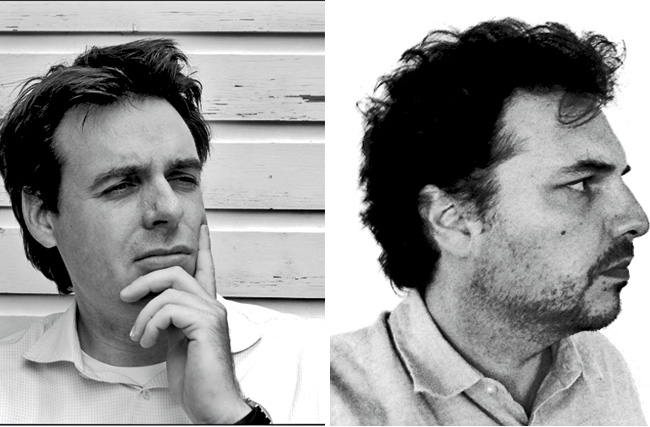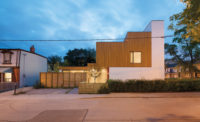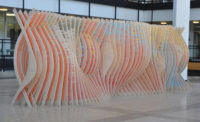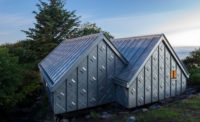When it comes to architecture, the firm Austin + Mergold, based in Philadelphia and Ithaca, New York, doesn't see a lot of sense in reinventing the wheel.

Jason Austin and Aleksandr Mergold started their eponymous landscape, architecture, and design firm in 2007.
“I like the word spolia a lot,” says principal Aleksandr Mergold, referring to the reuse of discarded building materials in late antiquity. “We often imagine ourselves like the guys in Rome recently sacked, going through the rubble,” he says. “But we are going to the Home Depot.”
It's a fitting metaphor for the firm, which selects materials often snubbed—vinyl siding, corrugated metal, concrete block—to create beautiful structures in rural contexts. Their primary line of inquiry, explains cofounder Jason Austin, is “How do we work with existing systems rather than invent new ones?”
Austin and Mergold, who grew up in central Pennsylvania and Tashkent, Uzbekistan, respectively, met as undergraduates at Cornell. After receiving their B.Archs, Austin went to SOM, while Mergold went to the graphic design firm Pentagram. Following several years in the field and a return to school—Austin to the University of Pennsylvania for landscape architecture, Mergold to Princeton for his M.Arch—the two, eager for something new, reconnected in 2007 to start their practice.
When the recession hit, much of the pair's work came to a screeching halt. But they found another kind of success with unusual projects: a competition entry for the 2008 London Festival of Architecture of colorful geometric jelly molds; Philadelphia-rowhouse-inspired birdhouses. In 2010, they were among the recipients of the Architectural League of New York's Prize for Young Architects.
As the economy thawed, Austin + Mergold reconsidered the context in which they were working—central Pennsylvania—observing the increasingly hazy distinction between rural and suburban zones. They reclassified these liminal areas on a continuum of “sural” and “rurban.” Perhaps one of the best examples of this idea is a conceptual project called House in a Can, which would convert disused grain silos into houses, partly by adding porthole windows, photovoltaic panels, and balconies.
In 2013, they won a competition to transform a 700-gallon stormwater cistern at a brewery in Lancaster, Pennsylvania into a public artwork. The Lancaster Bundle, as it is called, is a structure of rods and poles evoking the hops on the municipal flag, and fasce, a Roman symbol of magistrate power. Further intellectual and architectural explorations led to a series of structures called Sural Walls. Their Sural Ark, a large boatlike structure made of lumber and vinyl siding, won the Architectural League's 2014 Folly competition, with the prize of a residency.
Today, Mergold teaches at Cornell AAP and Austin at Drexel University. As the firm evolves, they hope to focus on fewer projects but have no desire to sacrifice breadth. “Our different trajectories of art, architecture, design, and landscape make us versatile,” says Austin. “We're not one-trick ponies.”


















Post a comment to this article
Report Abusive Comment